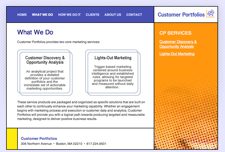Retailers that have identified and analyzed their customer base over the past year may find a new use for that work now that the economy is more unsettled. The knowledge gained by putting customers into actionable segments may provide a hedge against overreactive decisions.
“There are many various levels of customer segmentation, and sometimes it mystifies me as to how companies decide on them,” says Ron Shevlin, senior analyst at the Aite Group. “But at this point it’s not the time to abandon that strategy if it’s in place. Smart companies will use that knowledge to continue to serve the customers that are most likely to respond to them.”
Updating customer value, and continuing to hone in on the needs and values that will motivate customer segments has always been a foundation of retail CRM. As the economy continues to show lower growth rates, a strong argument could be made that some customer segments are changing. Are the most frequent customers maintaining an income level that allows them to be frequent? Are the “luxury” shoppers still in first class? Knowing the answers is essential. Customer strategy experts suggest the following rules for re-evaluating and acting on customer segments.
1. Clearly define the rules of engagement. Each customer segment should have a protocol for frequency and relevancy of communication. For example, if a fashion retailer defined one of its segments as “frequent discount shoppers” it probably alerted that segment via email and direct mail as to sales and events. Just because that retailer needs to make up some ground in the fourth quarter doesn’t mean that it should drop prices more frequently and then bombard the discount segment with emails. The same practice holds true for every other customer segment regardless of whether it is defined by attitude, behavior, revenue, or demographics. “There is a temptation for segment-oriented marketers to return to the practice of carpet bombing,” says Nick Godfrey partner at Customer Portfolios. “It’s not needed. You must decide before the fourth quarter gets very busy exactly how far you’re willing to go to change pricing, marketing messaging, and tactics. To go beyond those agreed rules of engagement compromises your brand and customer relationships.”
2. Protect the Brand: The brand, as Godfrey points out, is simply an aggregation of customers. Customer value is best increased by acting with the knowledge of sound segment valuation and analysis. The highest value customer segment (i.e. the customers who spend the most, shop the most frequently and recommend your company) must be shown the best practices a retailer has to offer. The best customer will still be the best customer after the holiday season is over, says Godfrey. Although the economy may have taken some segment metrics down (such as purchase frequency) they have not taken them out. “The brand does not evaporate on December 24th,” he says. “The brand is made up of customers. Their motivations may change but they are still in a lifecycle with your company that should be followed.”
3. Understand segment changes: It is quite possible, and even probable, that the monetary value of key customer segments have changed. First, the credit, housing, and oil crises have very simply taken retail spending down. Second, inflation has hit many retail verticals, so the amount of money key segments will spend will be affected by the value exchange. Example: The “convenience oriented housewife” may still spend 90 percent of her grocery budget at your store. But what she can actually purchase for the same amount of revenue has dropped.
Shevlin maintains that retailers do not execute against their segment work effectively. Therefore, when segment value changes they tend to overreact. They tend to reinvent campaigns based on segment value changes, and even reinvent their entire segment profile. In most cases it is not necessary.
“You don’t have to move from student body right to student body left just because of the latest and greatest customer survey,” he says. “The smart market researcher knows that customer research needs to be analyzed. Do changes mean that actual spending plans are changing? Are they simple reflections of changing attitudes or are they hard and fast economic changes?”
Real-time customer data updates can be critical. It’s hard to find the percentage of retailers that currently implement real time reports. A recent Aberdeen report put the number at 20 percent, but that was based on retailers currently implementing loyalty programs. Retailers that understand the importance of customer analysis will most likely plan for better real-time customer data, and update their segment strategy accordingly.
“The last place I want to panic is where I can be seen by my most valuable customers,” says Godfrey. “The evidence of a downturn is still debatable. You can make it as bad as you want to. Don’t risk panic on your valuable customer segments.”













